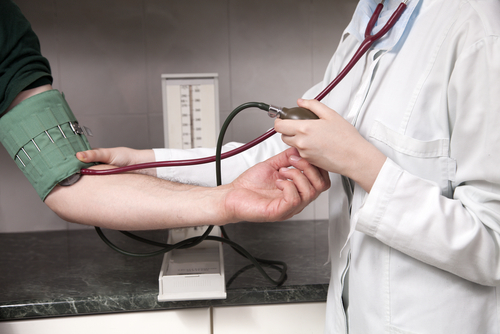The BP Check Challenge: Only 1 out of 159 students gets a perfect score
M3 India Newsdesk Oct 30, 2017
Blood pressure is probably the most standard measurement to be taken by any doctor when conducting preliminary investigations on a patient.

Here is a summary of an article published in The Journal of Clinical Hypertension (June 2017)where just one student scored 100 percent. On average, students performed 4.1 of the 11 skills correctly.
A team of scientists from the American Medical Association, the University of Pennsylvania and the University of Tennessee Health science center conducted a blood pressure (BP) challenge simulation among nearly 159 medical students. The study was announced and volunteers were sought from the student members of the American Medication Association (AMA) during an AMA event. All the participants had some training in measuring blood pressure before they participated in this challenge.The skills measured included the amount of rest required before measuring BP, body position, cuff selection, the environment and measuring BP in both arms. The results were deplorable! Only one student of 159 was able to get a perfect score in all the eleven indicators, indicating that the other 158 made some or the other error in measuring BP! The most neglected aspect remained not resting the patient the mandatory five minutes before measuring BP, with only about 7% following it. Some skills, such as uncrossing legs and not talking were followed by half of the students, while there were some areas where most students followed the protocol.
This study brings to the fore an important finding, that even skills considered to be the most elementary need revising. Especially for those diagnostic skills which are considered to be vital, refreshing correct techniques and best practices is probably a practice which doctors personally, and accreditation agencies need to consider while designing refresher courses and continuing education for doctors.
The standard practices for measuring blood pressure include some basic practices, which include waiting for five minutes before measurement, having the patient’s legs uncrossed, having their feet on the floor, their arm being supported by a surface, using the correct cuff size, placing the cuff over their bare arm, not talking, using cell phones or reading, measurement on both arms, correctly identifying BP from the arm with the higher reading as being clinically more important and finally, correctly identifying which arm to use for future readings (the arm with higher BP). The students were assessed for each of these skills, and the final score was based on a composite of these scores.
Measuring blood pressure is one of the most critical indicators of health, and incorrect measurements can throw a person’s treatment vastly off course, often subjecting him or her to over or under treatment depending on the nature of the errors committed by the doctor. Not following this protocol significantly alters the outcome of the patient. Some practices elevate the blood pressure by nearly 5 to 10 mm of Hg, thus blurring the differences between pre-hypertensive patients and hypertensive patients. This misclassification can be dangerous since it can subject patients to unnecessary medical treatments which may prove to be harmful for them in the future rather than alleviating any medical conditions.
Moreover, this study did not include auscultatory assessment, which requires a higher amount of skill to perform, and hence, even with that element not being part of the study, students were unable to perform adequately. This suggests that the skill of students to measure BP requires significant changes.
The AMA scientists and authors recommended that these skills be refreshed and be retaught during their further studies, thus reducing chances of students forgetting them and believing (falsely!) that they are able to measure BP accurately.
The study rings alarm bells for patients and should ring alarm bells for the medical profession as well, which is sometimes unaware of the flaws in its system. India has a rising number of hypertension cases, and BP measurements are unlikely to be automated any time soon. In such a scenario, it is necessary for us to reexamine if our own medical students and doctors are well versed with the techniques to measure simple parameters such as BP.
Source: Medical students and measuring blood pressure: Results from the American Medical Association Blood Pressure Check Challenge. Michael K. Rakotz, Raymond R. Townsend, Jianing Yang, Bruce S. Alpert, Kathleen A. Heneghan, Matthew Wynia, Gregory D. Wozniak J Clin Hypertens (Greenwich). 2017 Jun;19(6):614-619.
-
Exclusive Write-ups & Webinars by KOLs
-
Daily Quiz by specialty
-
Paid Market Research Surveys
-
Case discussions, News & Journals' summaries